Keita Daniel
We were able to engage the outer loop ISS after the mode cleaner was locked and power up to 50 W in full lock. The third loop was intended to be engaged around 10 W, but due to a scaling error in the arm powers, the gain was too low. We were able to adjust the gain, when we reached 40 W. And then power up to 50 W.
How to engage the outer loop:
- To turn the outer loop off, set the OUTERLOOP_ENABLE switch, the OUTERLOOP_BOOST_1 switch and and the output switch of the THIRDLOOP_SERVO to off. The input switch of the OUTERLOOP_AC_COUPLING_SERVO should be on. The SECONDLOOP_CLOSED switch in the first loop ISS may or may not be off.
- Once the first loop ISS is working, the SECONDLOOP_CLOSED can be turned on.
- Once the IMC is locked, the OUTERLOOP_ENABLE can be turned on.
How to engage the third loop:
- When the input power reaches 10 W, set the gain of the THIRDLOOP_SERVO to 0 and the TRAMP to 3.0 sec. Now turn the output switch of the THIRDLOOP_SERVO on and set its gain to 1.0.
This is now coded on the guardian. However, the arm power scaling error needs to be fixed with an LSC model reboot.
New features in the digital ISS model:
- The input switch of the OUTERLOOP_AC_COUPLING_SERVO also switches the corresponding AC coupling filter in the third loop.
- When the OUTERLOOP_ENABLE is off, the integrator in the AC coupling bleeds off its offset.
We did not test turning on the boost or turning off the AC coupling of the outer loop. Changing the ISS main gain is problematic due to electronics offsets. The same goes for the boost stage.




















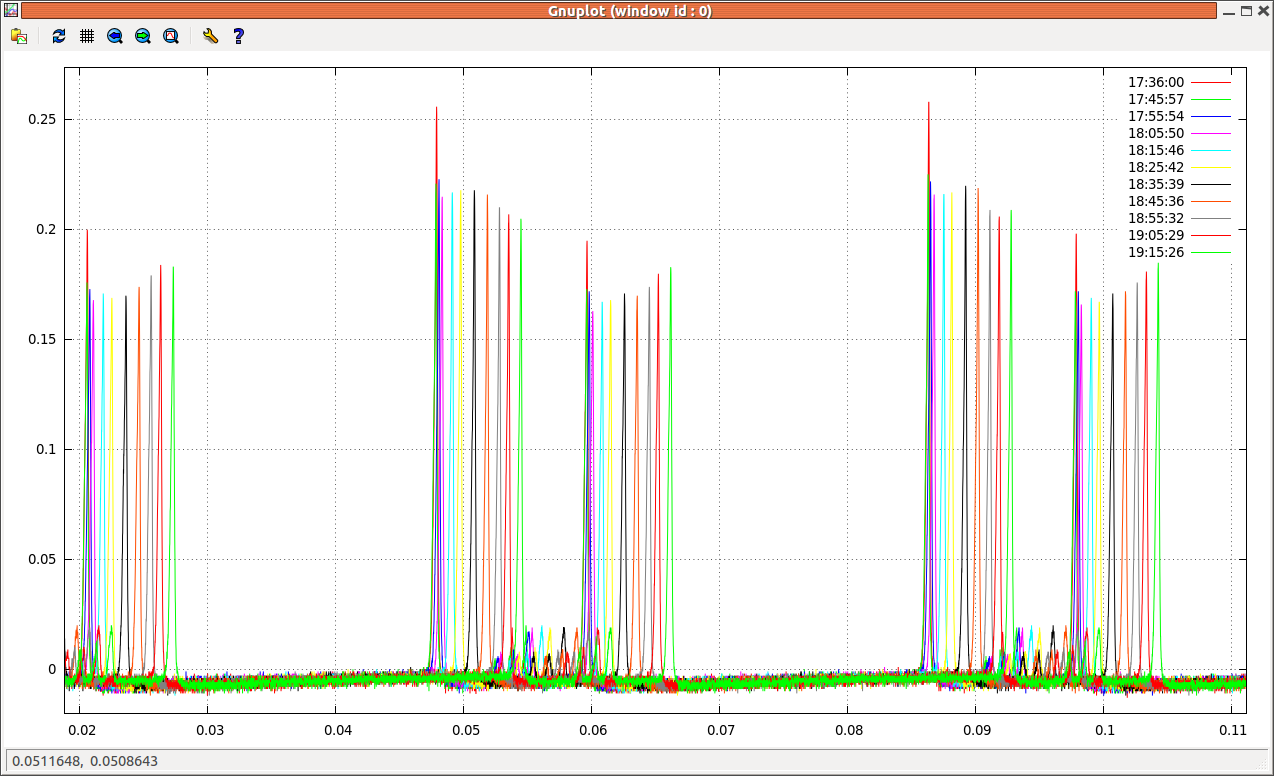
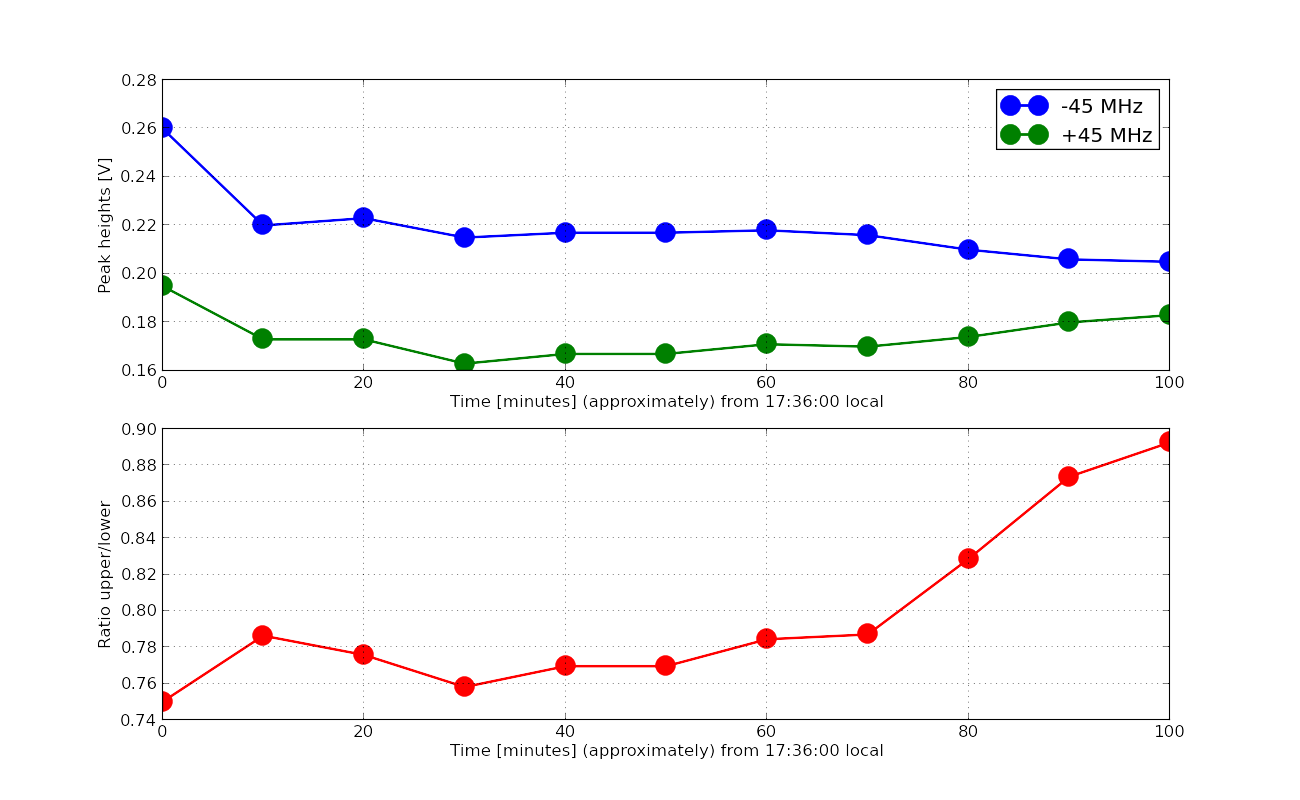



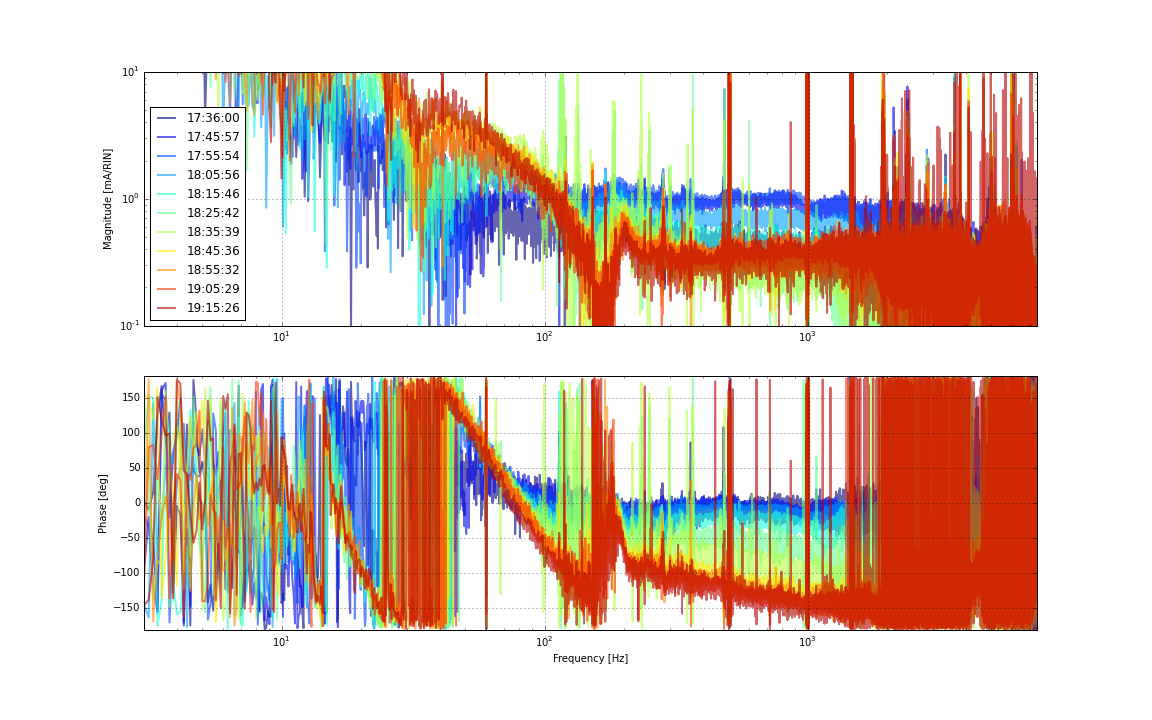
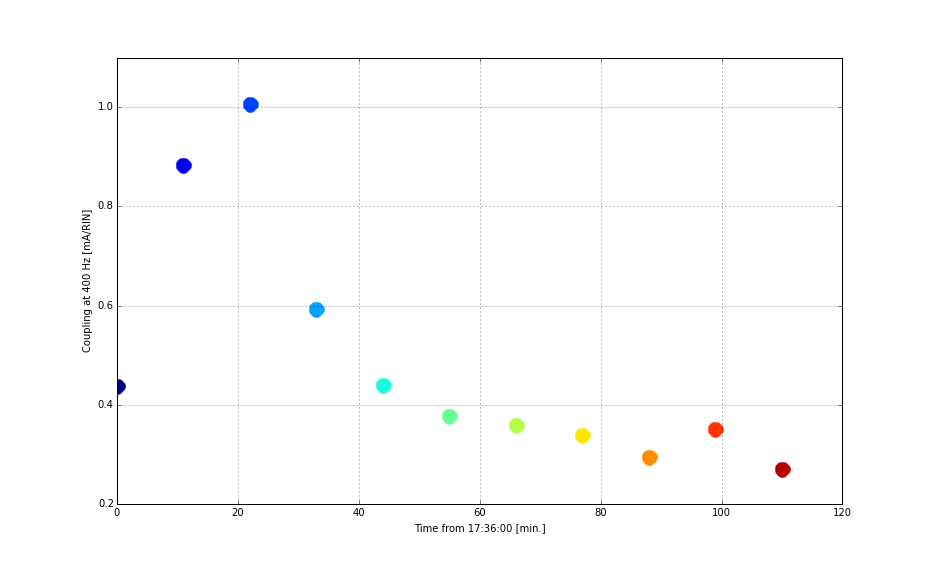


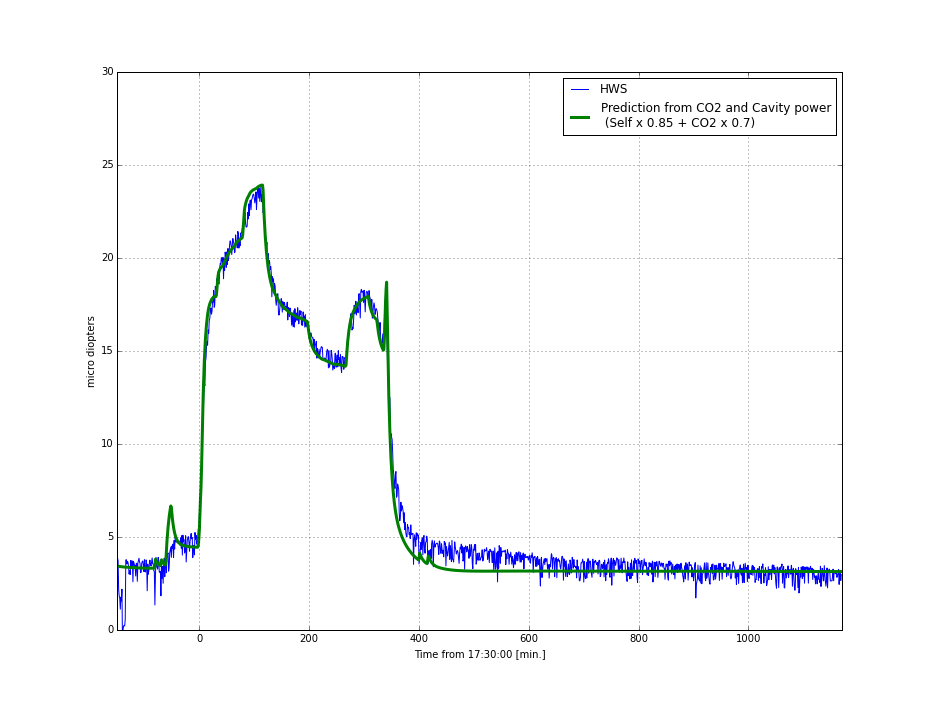
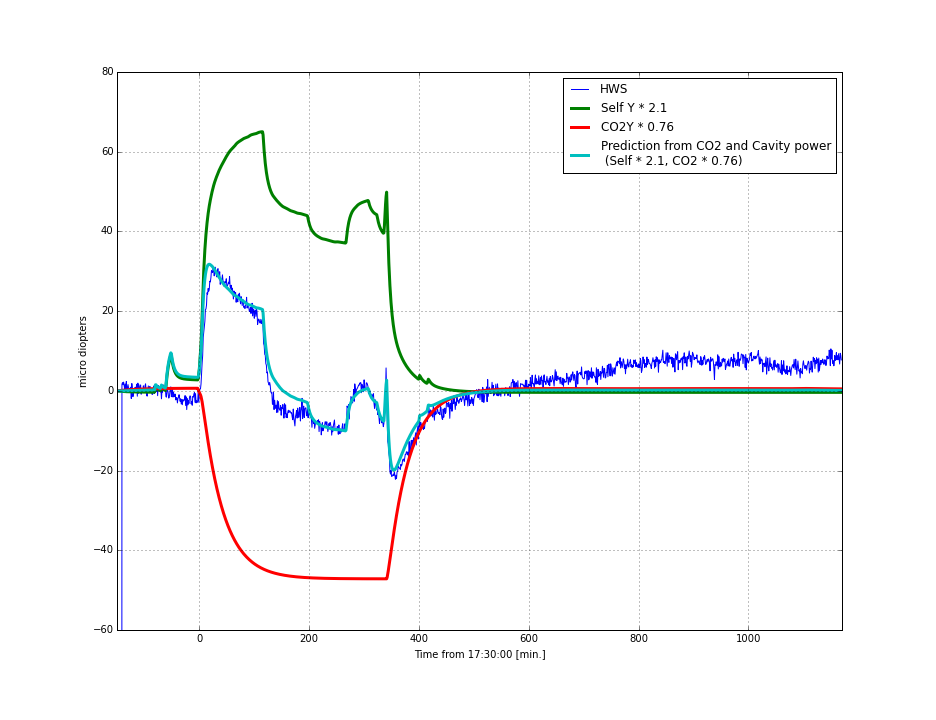


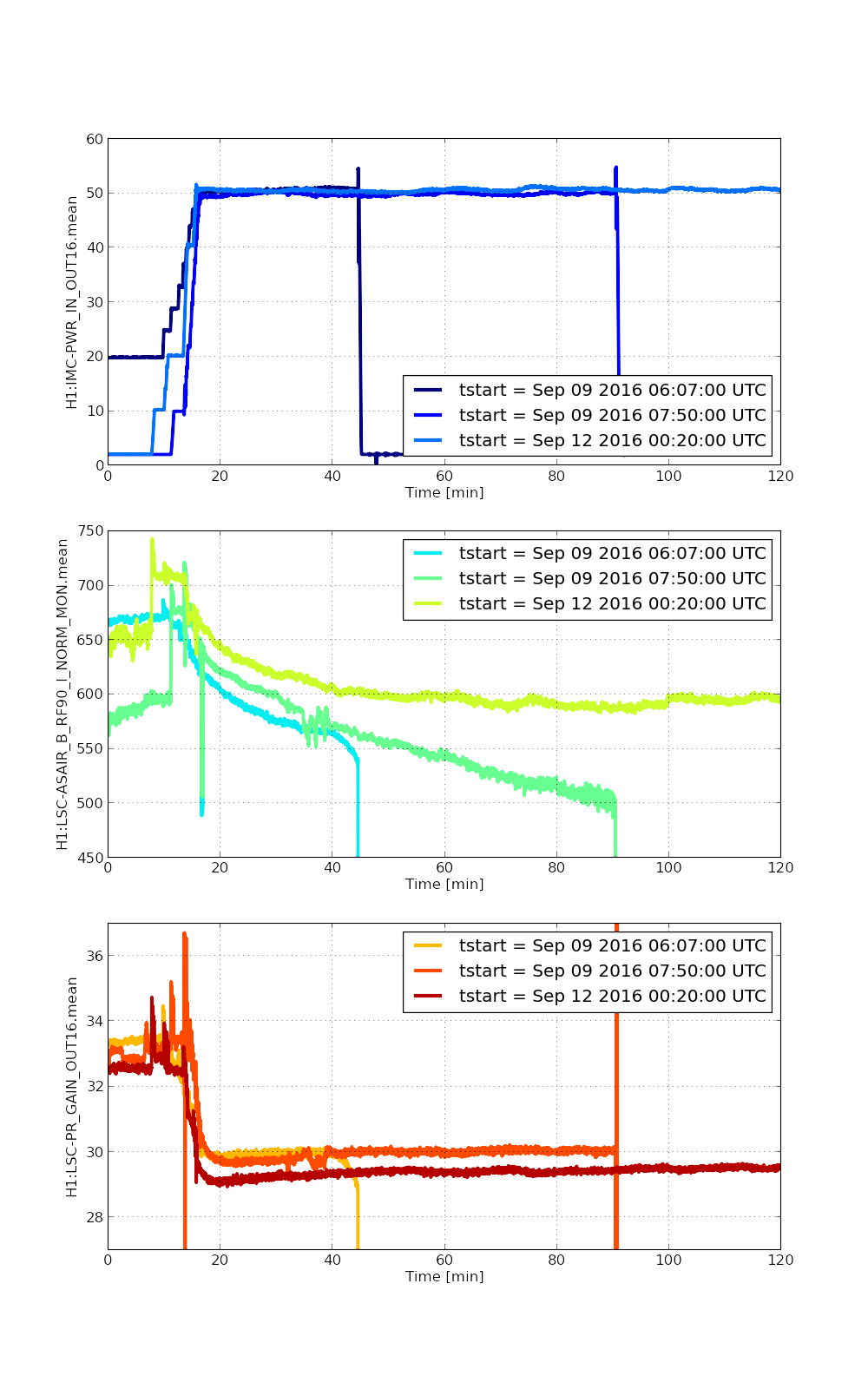

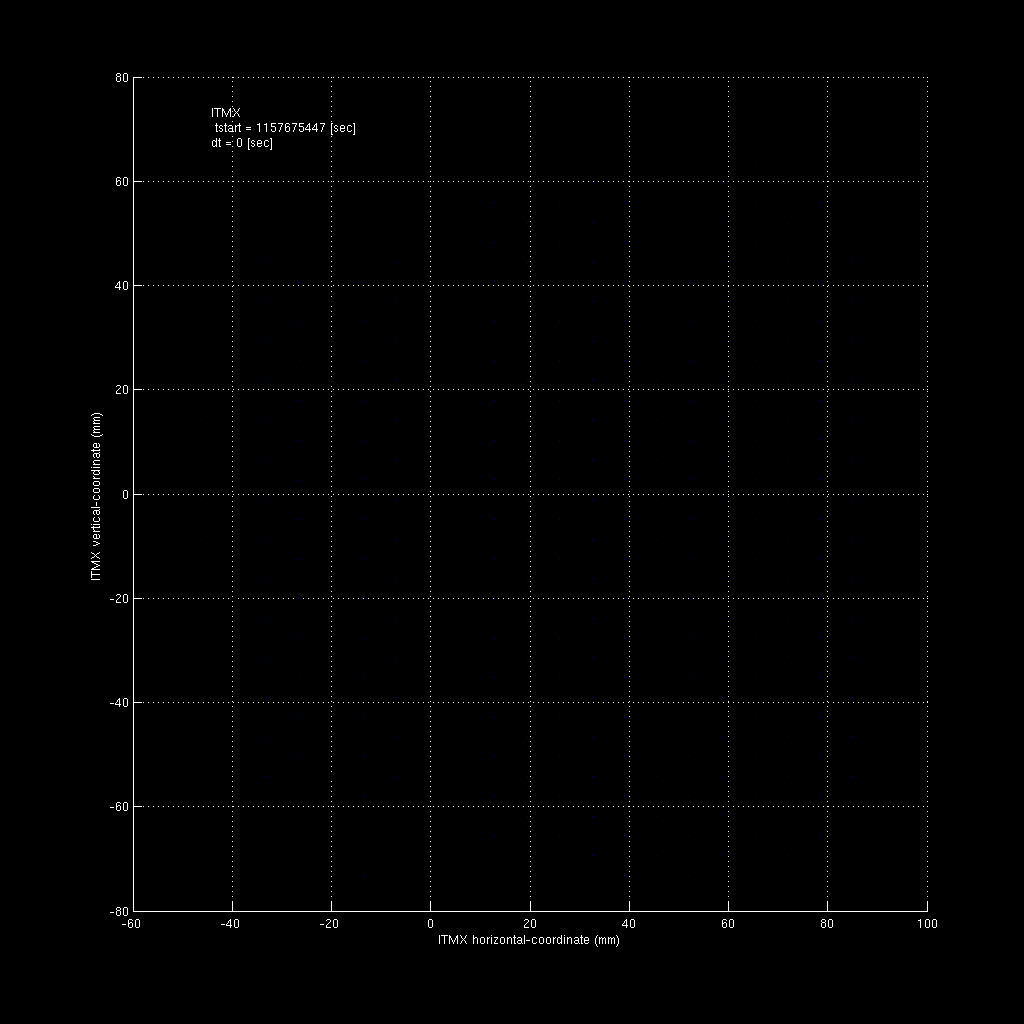
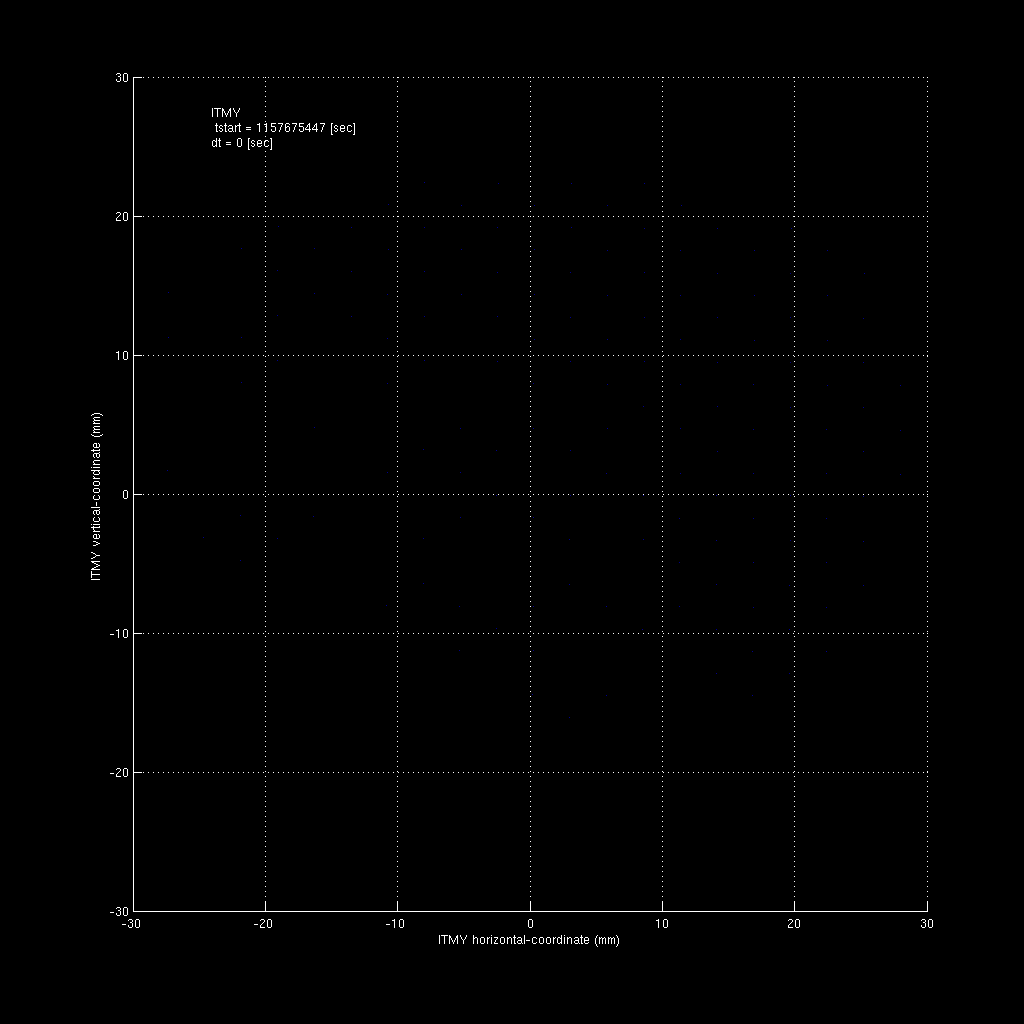


OLTF of the third loop at 40W, with the outer loop engaged with AC coupling (first attachment, red and blue).
Some notes about power scaling: